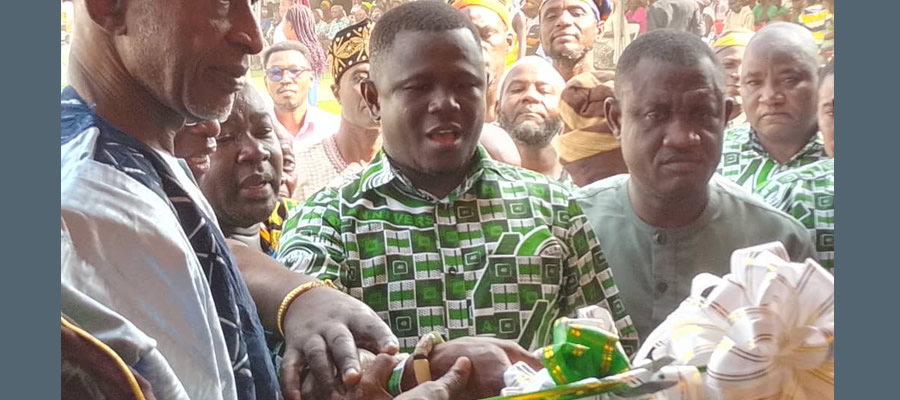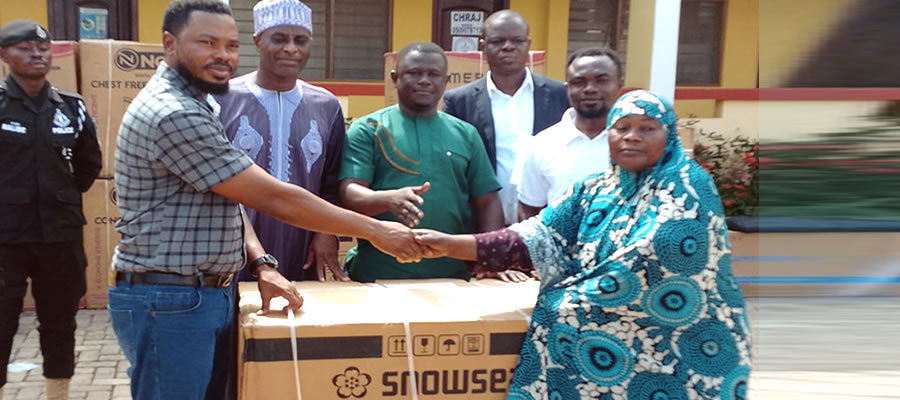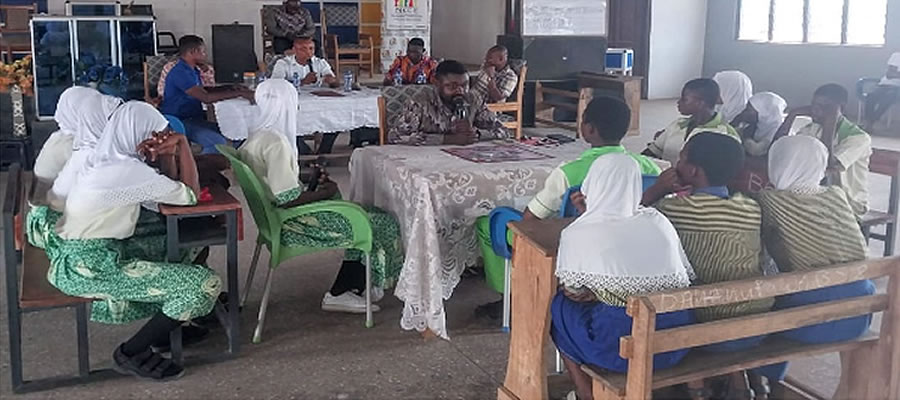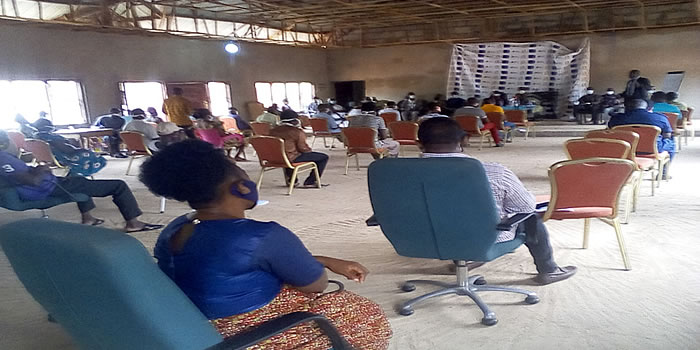

Vulnerability Analysis
Vulnerability is defined as women, orphans, and poor men, children in conflict with the law or any person prone to any act of insecurity. A person is considered vulnerable if he/she is and/or can be sub-projected to all forms of abuse. A person deprived of his/her basic rights and needs is also described as vulnerable.
The Growth and Poverty Reduction Strategy (GPRS II) of Ghana defines a vulnerable person as one who does not reach his/her full potential and cannot contribute effectively to the economic growth and sustainable social development in a country.
Exclusion is the invariable penitence of vulnerability. That is the extreme form of vulnerability which later becomes a socially accepted concept leading to exclusion of the person involved termed as the excluded. Exclusion therefore leads to a social group referred to as “the marginalized and disadvantaged”. These conditions in society hinder these groups of people from participating in general development and therefore do not contribute to development but become spectators in the society. They are also neglected, in very important activities such as decision-making which would impact positively on their socio-economic wellbeing.
Vulnerable and Excluded Groups in the District
Vulnerability Analysis
Vulnerability refers to the inability to withstand the effects of a hostile environment. A vulnerable person therefore is the one who does not reach his/her full potential and cannot contribute effectively to the economic growth and sustainable social development in a given environment. Thus the vulnerable are often excluded from very important activities such as decision-making which is expected to impact on their lives.
The table below presents identified vulnerable and excluded groups in the district and the effects of the vulnerability.
Table 28: Vulnerability Analysis
Source DPCU, 2017
Types of Shocks and Risks Faced by Households in the District Shocks and Risks can be said to be activities or situations that expose the vulnerable groups as children, women the elderly among others to emotional and physical stress or trauma. The risks and Shocks faced by households in the district ranges from natural events (which cannot be predicted and gives no warning for its occurrence) to man-made (that is conflicts, policy induced, terms of trade shocks, illness and death).
Agriculture being the mainstay of the District depends mainly on rainfall for production. The existence of the Volta Lake is not fully exploited for irrigation farming during the dry season.
As a result the major shock and risk affecting food availability, incomes and wealth accumulation are those that relate mainly to crop, production and fishing. The economic activities that individuals and households are involved in also determine to a large extent the vulnerability they suffer in terms of income stability and asset loss in the District. The main types of shocks affecting most households in the district relate to the areas of food insecurity, human insecurity and job insecurity.
In Pru West, most of the shocks cited are related to production, since is a major agricultural area. These shocks may occur as a result of crop failure due to poor rains, flooding and bush fire, affecting harvest. This type of shock according to reports from District Poverty Profiling was reported by 30% of households. Also, farm produce like yam may be stored at the farms and at times are burnt into ashes by bushfires. In 2009 a total of 1,258 farmers reported this type of shock.
Price-related stocks were also cited. This was reported by the fishermen, farmers, transported operators among others. Due to the fluctuating prices of agricultural produce like maize, yam and cassava and inadequate storage and processing facilities, increased harvest usually end up in glut of produce and low prices. Also increases in fuel prices indirectly affect production cost which in turn affects the prices of goods and services especially transportation cost.
The unavailability of storage facilities in the Districts compels farmers to sell off their produce immediately after harvest for the fear of produce getting rotten, or any unforeseen hazards, when prices are low. The same farmers are forced to buy back the produce during the lean season, when prices are at their highest levels.
Other shocks and risks cited include illness, job loss and disability of income earner, loss of assets due to disease (death of livestock) or bushfire or theft/arm robbery on the highway conflicts resulting from chieftaincy disputes and insecurity of land tenure were also mentioned as shocks.
Due to the seasonal nature of agricultural production and the lack of other sources of income; apart from farm/fishing related generating opportunities, most of the youth in farming or those employed in this sector are virtually without work during a large part of the year. About 38 % of employees in the private sector and the self-employed have to gone through periods of inactiveness due to ill-health, infrequency in the demand for their services or the seasonal nature of their jobs.
Shocks and risks related to rain storms, flooding (especially those near to the lake), bush and domestic fires are reported events that affect houses including schools, community buildings and other individual property.
Coping Mechanisms / Strategies to Overcome Shocks
In view of the challenges resulting from the shocks and risks facing households in the district, a number of coping mechanisms are developed by people to enhance their livelihoods. Studies have revealed that households in the rural areas are more exposed to natural and agriculturerelated shocks than those in the urban areas. In Pru, rural communities respond to shocks of this nature by selling their assets or livestock and informal insurance mechanisms. The non-poor that is those in the urban areas also use self-help mechanisms as well as market-based strategies like falling on personal savings and loans from the banks. The uses of the formal insurance mechanisms are not patronized. This may be due to the information on their existence in the district.
Persons Living in Disaster Prone Areas
A disaster is an event, which affects the lives of human beings, their properties, infrastructure and the environment. It destructs day to day life and renders affected communities unable to cope with day to day life. It increases the need for external assistance and has a causative agent which includes wind rain, blasts, bombs and accidents. It happens suddenly and gives no warning (NADMO Definition).
Some communities in the District have experienced disasters of many forms, natural and manmade disaster. The various disaster prone areas and the types of disaster that occurred there in the year 2009 are presented in the table below.
Table 29: Disaster Prone Communities and their Forms of Disaster
Source: NADMO Pru West District, 2017
Programmes and Safety Nets put in Place for the Vulnerable and Excluded
The District recognizing the role of the vulnerable and excluded has designed programmes and safety nets to help them contribute effectively to the decision making process. These programmes and measures are geared towards the prevention of any forms of hardship. The programmes include the mass registration of the identified persons under the National Health Insurance Scheme, the increase in coverage of the LEAP and the establishment of cooperatives and welfare societies. Aside this, the social Security and the National insurance Trust pension schemes for the aged helps retired people to have some livelihood.
Similarly, a series of programmes like, sponsorship packages for the girl child, withdrawal of children in worst form of child labour, abuse, trafficking, appointment of more women into the Assembly, school feeding programme (improving the nutrition of vulnerable children), microfinance especially for women, conditional transfer (LEAP) among other related programmes are focused on improving the living conditions of the vulnerable. Detailed programmes are outlined in the composite programme of action of this document.
Identification of Community Needs and Aspirations
The DPCU conducted a stakeholders? forum through, departmental and management meetings, community needs and aspirations. This was principally carried out for development interventions to reflect the true needs and aspirations of the people. Having finished the consultation processes, the listed needs and aspiration below came up;
1. Improve Road Network
2. Construction of classrooms
3. Extension of electricity
4. Mechanization of boreholes.
5. Disability funding.
6. Provision of Toilet facilities.
7. Construction of boreholes
8. Street light maintenance
9. Street lights extension
10. Construction of CHPS compounds
11. Construction of Market facilities
12. Complete ongoing projects
13. Construction of Police post
14. Extension of School feeding programme
15. Expansion of LEAP
16. Facilitate the provision of MASLOC
17. Provision of furniture for basic schools
18. Provision of accommodation for teachers
19. Rehabilitation of clinic/CHPS Compounds.
20. Construction of drainages.
21. Provision of household meters.
22. Construction of institutional boreholes.
23. Maintenance of water facilities
24. Formation and training of WSMTs
25. Provision of meters to be facilitated by DCE.
26. Procurement of computers/Laptop.
27. Rehabilitation of schools.
28. Construction of ICT centre
29. Nurses? quarters
30. One District One dam preparation.
31. Youth employment.
32. Construction of final waste site.
33. Construction of lorry station
34. Construction of staff accommodation
35. Construction of a VIP guest house
36. Construction of institutional latrines
37. Construction of NHIS office
38. Construction of district agriculture office
39. Organization of Town Hall meetings
Harmonization of community needs and aspirations with identified key development gaps/problems/issues
The community needs and aspirations were harmonized with the development gaps identified during performance review and updating of district profile to get development issues with implication for 2018-2021. The results are shown in table 2.1 below.
Table 2.1: Harmonization of community needs and aspirations with identified key development gaps/problems/issues
An average score of 2.27 shows strong harmony between the community needs and aspiration and the issues identified from performance review and updating of district profile. This indicates that the gaps identified in the review of 2014-2017 DMTDP are still issues that will have implications for 2018-2021, therefore there should be programmes to address them.
These issues with implication for 2018-2021 were group under the thematic areas of GSGDA as shown in table 2.2 below
Table 2.2 Key development issues under GSGDA II with implications for 2018-2021
Date Created : 7/14/2023 12:00:00 AM










 facebook
facebook
 twitter
twitter
 Youtube
Youtube
 +233 593 831 280
+233 593 831 280 0800 430 430
0800 430 430 GPS: GE-231-4383
GPS: GE-231-4383 info@ghanadistricts.com
info@ghanadistricts.com Box GP1044, Accra, Ghana
Box GP1044, Accra, Ghana